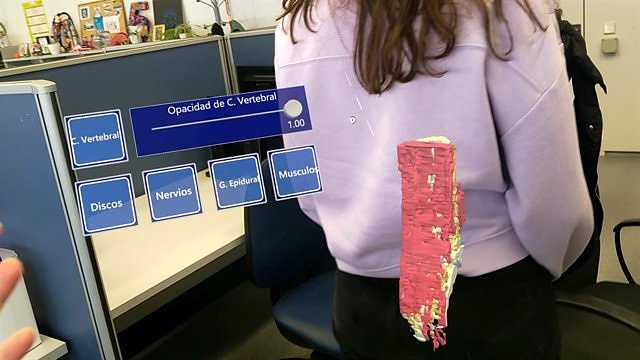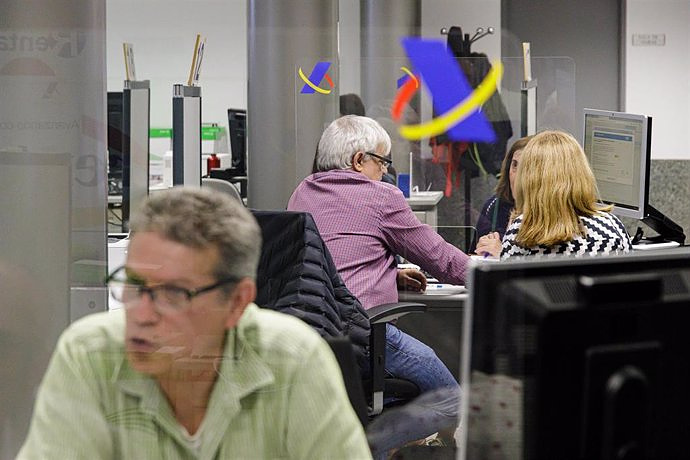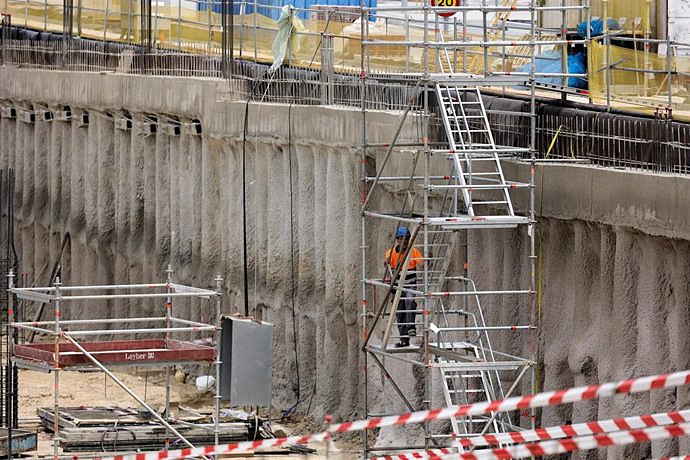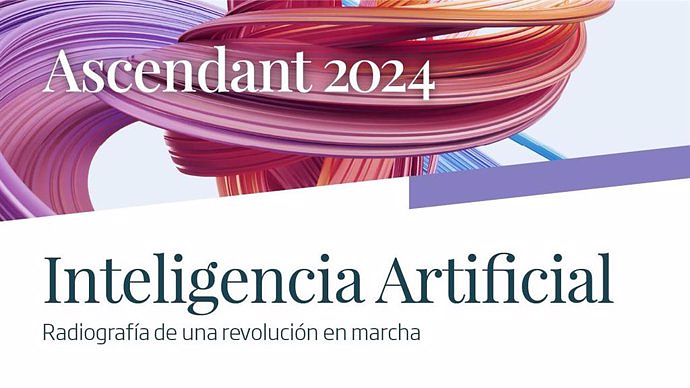VALENCIA, Apr. 27 (EUROPA PRESS) -
Research staff from the Mixed Biomedical Imaging Unit of the Fisabio Foundation and the Príncipe Felipe Research Center (CIPF), led by the researcher María de la Iglesia, have developed a prototype that uses magnetic resonance imaging (MRI) of the lumbar spine and virtual reality glasses to assist in lumbar spine surgeries.
The prototype is being developed with the Hololens device (holographic device) that simulates a 3D model of the patient's spine in the same position as the real spine. With this, surgeons will be able to see the entire anatomy of the lumbar spine prior to surgical intervention.
The model, which is being developed by the researcher at the Fisabio-CIPF Mixed Biomedical Imaging Unit Kate Kardash, simulates the spine in a virtual way, with realistic movements and in different positions, where the different points that will be intervened during the procedure can be marked. surgery.
The spinal models generated with the program have been created through magnetic resonance imaging, where the spine has been previously segmented --using Artificial Intelligence-- with more than eleven identified structures of the lumbar spine. All these images have been extracted from the MIDAS (Massive Image Data Anatomy Spine) project.
The researcher from the Fisabio-CIPF Mixed Biomedical Imaging Unit and the University of Navarra Clinic, Julio Domenech, has stated that "unlike reconstructions based on computed tomography (CT), which only allow bone reconstruction, lumbar MRI images give very good resolution to identify other structures such as nerves, spinal cord, discs, muscle and ligaments in the reconstructed 3D image."
On the other hand, the research staff will continue to improve the tool to create a connection of multiple glasses that can be used by different specialists of the medical team.
For her part, María de la Iglesia, principal investigator of the Fisabio-CIPF Mixed Biomedical Imaging Unit, explained that "the program is still in the prototype phase, since all its features have been tested with virtual models, but not in real samples.
In addition, its future development could be applied not only in spinal surgeries, but in any part of the body or tissues that could help healthcare personnel in the diagnosis and treatment of certain injuries in clinical practice."
"The model has two applications that can be transferred to clinical use in patients. On the one hand, it makes it easier for the surgeon to plan the surgery in advance, and on the other, it can be used intraoperatively, which will make it possible to more accurately identify anatomical structures, so that increases the precision of surgical gestures and access to structures not visible with the ordinary technique", added Julio Domenech.

 Exploring Cardano: Inner Workings and Advantages of this Cryptocurrency
Exploring Cardano: Inner Workings and Advantages of this Cryptocurrency Seville.- Economy.- Innova.- STSA inaugurates its new painting and sealing hangar in San Pablo, for 18 million
Seville.- Economy.- Innova.- STSA inaugurates its new painting and sealing hangar in San Pablo, for 18 million Innova.- More than 300 volunteers join the Andalucía Compromiso Digital network in one month to facilitate access to ICT
Innova.- More than 300 volunteers join the Andalucía Compromiso Digital network in one month to facilitate access to ICT Innova.-AMP.- Ayesa acquires 51% of Sadiel, which will create new technological engineering products and expand markets
Innova.-AMP.- Ayesa acquires 51% of Sadiel, which will create new technological engineering products and expand markets Abascal (Vox) criticizes that Sánchez is "victimizing" himself and calls for elections after his possible resignation
Abascal (Vox) criticizes that Sánchez is "victimizing" himself and calls for elections after his possible resignation Carlos Alcaraz reaches the round of 16 in Madrid without breaking a sweat
Carlos Alcaraz reaches the round of 16 in Madrid without breaking a sweat Some 5,000 people demonstrate in front of Congress for democracy, hours before Sánchez's decision
Some 5,000 people demonstrate in front of Congress for democracy, hours before Sánchez's decision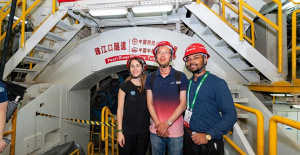 STATEMENT: Intelligent systems used in the construction of the deepest underwater tunnel in China
STATEMENT: Intelligent systems used in the construction of the deepest underwater tunnel in China How Blockchain in being used to shape the future
How Blockchain in being used to shape the future Not just BTC and ETH: Here Are Some More Interesting Coins Worth Focusing on
Not just BTC and ETH: Here Are Some More Interesting Coins Worth Focusing on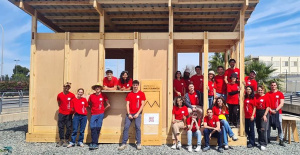 UPV students build a prototype of a wooden house to move to Equatorial Guinea
UPV students build a prototype of a wooden house to move to Equatorial Guinea The UA opens the call for the Impulso 2024 Awards for the best innovative business initiatives
The UA opens the call for the Impulso 2024 Awards for the best innovative business initiatives ALI, virtual assistant from Alicante, internationally recognized by the OECD
ALI, virtual assistant from Alicante, internationally recognized by the OECD Retrópolis brings the golden age of video games and computing to the UPV
Retrópolis brings the golden age of video games and computing to the UPV A million people demonstrate in France against Macron's pension reform
A million people demonstrate in France against Macron's pension reform Russia launches several missiles against "critical infrastructure" in the city of Zaporizhia
Russia launches several missiles against "critical infrastructure" in the city of Zaporizhia A "procession" remembers the dead of the Calabria shipwreck as bodies continue to wash up on the shore
A "procession" remembers the dead of the Calabria shipwreck as bodies continue to wash up on the shore Prison sentences handed down for three prominent Hong Kong pro-democracy activists
Prison sentences handed down for three prominent Hong Kong pro-democracy activists ETH continues to leave trading platforms, Ethereum balance on exchanges lowest in 3 years
ETH continues to leave trading platforms, Ethereum balance on exchanges lowest in 3 years Investors invest $450 million in Consensys, Ethereum incubator now valued at $7 billion
Investors invest $450 million in Consensys, Ethereum incubator now valued at $7 billion Alchemy Integrates Ethereum L2 Product Starknet to Enhance Web3 Scalability at a Price 100x Lower Than L1 Fees
Alchemy Integrates Ethereum L2 Product Starknet to Enhance Web3 Scalability at a Price 100x Lower Than L1 Fees Mining Report: Bitcoin's Electricity Consumption Declines by 25% in Q1 2022
Mining Report: Bitcoin's Electricity Consumption Declines by 25% in Q1 2022 Oil-to-Bitcoin Mining Firm Crusoe Energy Systems Raised $505 Million
Oil-to-Bitcoin Mining Firm Crusoe Energy Systems Raised $505 Million Microbt reveals the latest Bitcoin mining rigs -- Machines produce up to 126 TH/s with custom 5nm chip design
Microbt reveals the latest Bitcoin mining rigs -- Machines produce up to 126 TH/s with custom 5nm chip design Bitcoin's Mining Difficulty Hits a Lifetime High, With More Than 90% of BTC Supply Issued
Bitcoin's Mining Difficulty Hits a Lifetime High, With More Than 90% of BTC Supply Issued The Biggest Movers are Near, EOS, and RUNE during Friday's Selloff
The Biggest Movers are Near, EOS, and RUNE during Friday's Selloff Global Markets Spooked by a Hawkish Fed and Covid, Stocks and Crypto Gain After Musk Buys Twitter
Global Markets Spooked by a Hawkish Fed and Covid, Stocks and Crypto Gain After Musk Buys Twitter Bitso to offset carbon emissions from the Trading Platform's ERC20, ETH, and BTC Transactions
Bitso to offset carbon emissions from the Trading Platform's ERC20, ETH, and BTC Transactions Draftkings Announces 2022 College Hoops NFT Selection for March Madness
Draftkings Announces 2022 College Hoops NFT Selection for March Madness